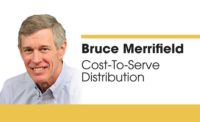As consumers, we benefit from the digital disruption that continues to march through different verticals (such as newspapers, movies, music albums, travel agents, cars, stock trading, etc). But, the unchanging, traditional players died while we gained.
A common pattern: Disruptors first unbundled old models, then they re-bundled new digital models. For example, Apple let us cherry-pick our favorite songs for 99 cents. Flush the rest of the album’s songs along with the distribution channel for physical records.
Then, digital re-bundlers added more value with reduced “friction” for us. Pandora and Spotify allowed us to pick playlists streamed to all devices. The freemium deal played fewer songs more frequently with ads. The premium subscription model offers any songs, no ads and constant fine-tuning of the algorithm underlying our evolving channels.
B2B distributors: Your standard, selling/service bundle is now under attack by:
- Many millennial, B2B buyers that don’t want to see (or pay) for regular rep calls. Instead, they want a digital buying journey with virtual support as needed. Then, on-site, face-time help if requested.
- Old-School buyers who may still want your existing model. But, are they generating enough margin dollars annually and per order to support face-time calls on a net-profitable basis? How fast are they retiring? And, won’t they shop your prices against digital sellers and offer last-look to match? If you do, then your bundle-costs per order will exceed the margin dollars for a loss.
- Big customers that are trending towards consolidating vendors. They want a lowest, total-cost, replenishment system. To co-create these solutions, do you have the prerequisite analytics, team skills and digital-process tools?
- Key suppliers that need to engage end users (your customers) with digital content and best omni-channel buying journeys. Their distributors must then fit into a new seamless, digital channel model. Do you have the shared vision, analytics and collaborative skills to proactively volunteer to be part of your suppliers’ (and customers’) new needs?
- Selling small customers and small orders versus. Amazon Business, which is a whole other article.
Your homework
- See and analyze the converging, e-commerce factors that are upon you;
- Get cost-to-serve analytics to enable the design of new, profitable models;
- Rethink your sales force to fit into new models;
- Skim or dive into and discuss my 12 recorded webinars; and
- Experiment and fail; learn forward to prepare for 2023 e-commerce models.







